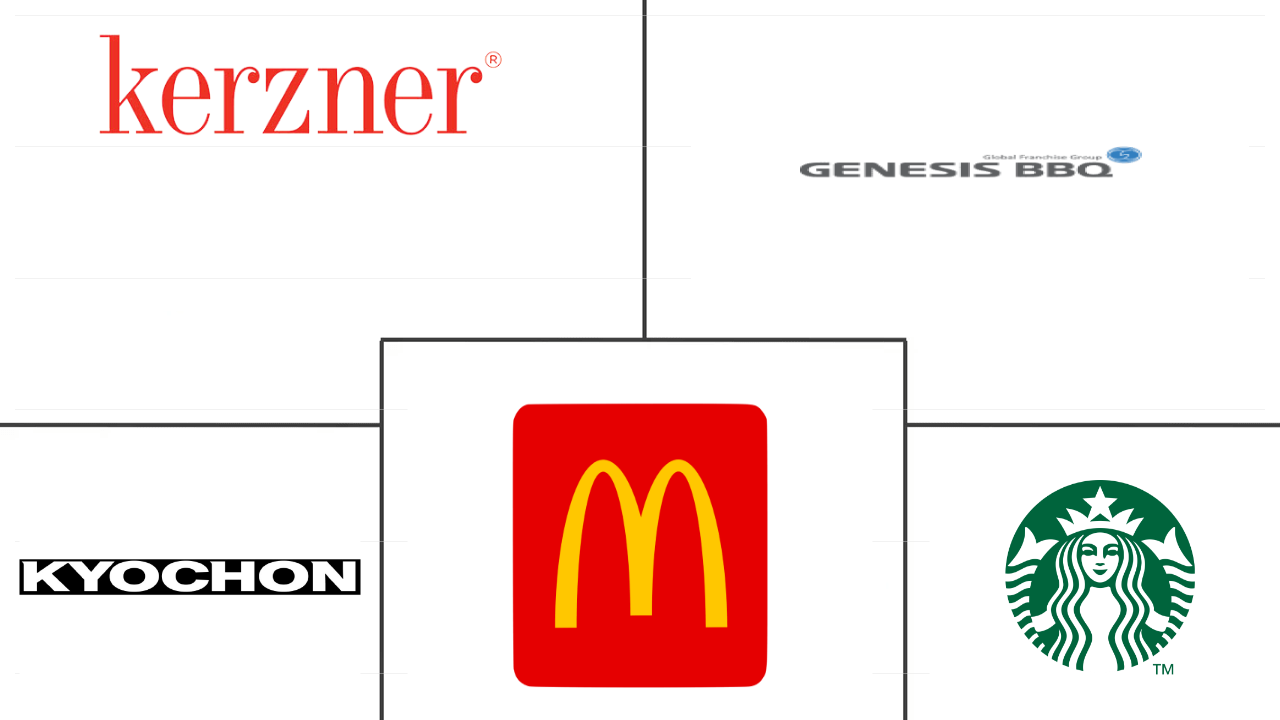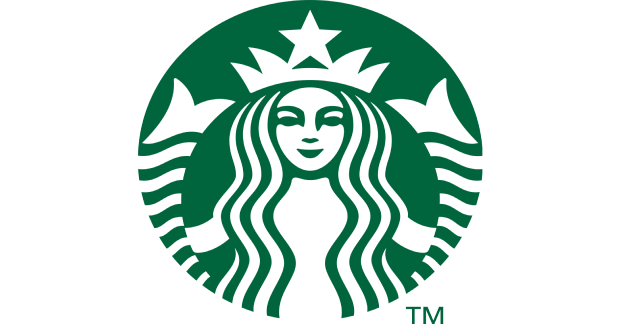Market Size of south korea foodservice Industry
|
|
Study Period | 2017 - 2029 |
|
|
Market Size (2024) | USD 110.11 Billion |
|
|
Market Size (2029) | USD 254.17 Billion |
|
|
Largest Share by Foodservice Type | Full Service Restaurants |
|
|
CAGR (2024 - 2029) | 18.21 % |
|
|
Fastest Growing by Foodservice Type | Cloud Kitchen |
Major Players |
||

|
||
|
*Disclaimer: Major Players sorted in no particular order |
South Korea Foodservice Market Analysis
The South Korea Foodservice Market size is estimated at 110.11 billion USD in 2024, and is expected to reach 254.17 billion USD by 2029, growing at a CAGR of 18.21% during the forecast period (2024-2029).
110.11 Billion
Market Size in 2024 (USD)
254.17 Billion
Market Size in 2029 (USD)
4.44 %
CAGR (2017-2023)
18.21 %
CAGR (2024-2029)
Largest Segment by Foodservice Type
62.96 %
value share, Full Service Restaurants, 2023
With more than 42% of the population eating traditional Asian food like Korean and Thai, Asian cuisine covers the largest share of the FSR segment.
Largest Segment by Outlet Type
73.04 %
value share, Independent Outlets, 2023
Full service restaurants dominate the segment, with Latin American cuisines growing the fastest due to the popularity of dishes made famous by the Korean diaspora in Mexico.
Fastest-growing segment by Foodservice Type
35.63 %
Projected CAGR, Cloud Kitchen, 2024-2029
In 2021, almost 31.5% of households in South Korea placed their meal orders online regularly, and the expansion of food delivery services promotes the growth of this segment.
Fastest-growing segment by Outlet Type
19.01 %
Projected CAGR, Chained Outlets, 2024-2029
Quick service restaurants dominate the segment, which is majorly boosted by the expansive network of international franchise outlets of KFC, Lotteria, and Isaac Toast.
Leading Market Player
2.33 %
market share, Starbucks Corporation, 2022

Since entering the market in 1999, the company has more than 284 coffee chains and gets most of its sales from its broad range of coffee-based beverages.
High demand for traditional cuisines and increased spending on dining increase the sales
- Full service restaurants accounted for the largest share of the South Korean foodservice market in 2022. Asian and North American cuisines together accounted for over a 50% market share. The demand for these cuisines is attributed to the increased preference of consumers for authentic regional cuisines like kimchi and Bulgogi, along with Japanese cuisines like Sushi and Tempura. While traditional Korean foods remain popular, dietary trends are shifting in favor of new and international preferences. Thus, restaurants are introducing more vegan, low-sugar, and gluten-free options to classic Korean cuisine, contributing to the segment's rise.
- Cafes & bars are projected to record a CAGR of 15.58% by value during the forecast period in the market, supported by the rising consumption of tea and coffee in the country. Coffee consumption in South Korea accounted for about 6% of the Asia-Pacific coffee market. In 2021, South Korea consumed almost 2.5 million 60-kg bags of coffee. Its consumption has steadily increased in recent years, and it is one of the most popular drinks among Koreans. On average, Koreans consumed 12.3 cups of coffee per week, amounting to a total annual consumption of 2.3 kilograms in 2022. Ediya Co and Starbucks are among the major coffee shops in the country, with 2,200 and 1,140 outlets, respectively.
- However, the cloud kitchen segment is the fastest-growing in the South Korean foodservice market and is anticipated to register a value CAGR of 35.13% during the forecast period. The growth is expected to be boosted by the rising online food deliveries through smartphone applications. As of January 2022, there were around 46.81 million internet users in South Korea. The number of internet users increased by 543 thousand between 2021 and 2022.
South Korea Foodservice Industry Segmentation
Cafes & Bars, Cloud Kitchen, Full Service Restaurants, Quick Service Restaurants are covered as segments by Foodservice Type. Chained Outlets, Independent Outlets are covered as segments by Outlet. Leisure, Lodging, Retail, Standalone, Travel are covered as segments by Location.
- Full service restaurants accounted for the largest share of the South Korean foodservice market in 2022. Asian and North American cuisines together accounted for over a 50% market share. The demand for these cuisines is attributed to the increased preference of consumers for authentic regional cuisines like kimchi and Bulgogi, along with Japanese cuisines like Sushi and Tempura. While traditional Korean foods remain popular, dietary trends are shifting in favor of new and international preferences. Thus, restaurants are introducing more vegan, low-sugar, and gluten-free options to classic Korean cuisine, contributing to the segment's rise.
- Cafes & bars are projected to record a CAGR of 15.58% by value during the forecast period in the market, supported by the rising consumption of tea and coffee in the country. Coffee consumption in South Korea accounted for about 6% of the Asia-Pacific coffee market. In 2021, South Korea consumed almost 2.5 million 60-kg bags of coffee. Its consumption has steadily increased in recent years, and it is one of the most popular drinks among Koreans. On average, Koreans consumed 12.3 cups of coffee per week, amounting to a total annual consumption of 2.3 kilograms in 2022. Ediya Co and Starbucks are among the major coffee shops in the country, with 2,200 and 1,140 outlets, respectively.
- However, the cloud kitchen segment is the fastest-growing in the South Korean foodservice market and is anticipated to register a value CAGR of 35.13% during the forecast period. The growth is expected to be boosted by the rising online food deliveries through smartphone applications. As of January 2022, there were around 46.81 million internet users in South Korea. The number of internet users increased by 543 thousand between 2021 and 2022.
| Foodservice Type | ||||||||||
| ||||||||||
| Cloud Kitchen | ||||||||||
| ||||||||||
|
| Outlet | |
| Chained Outlets | |
| Independent Outlets |
| Location | |
| Leisure | |
| Lodging | |
| Retail | |
| Standalone | |
| Travel |
South Korea Foodservice Market Size Summary
The South Korea foodservice market is experiencing significant growth, driven by evolving consumer preferences and technological advancements. Full-service restaurants (FSR) dominate the market, with a substantial share attributed to Asian and North American cuisines, reflecting a growing demand for authentic regional and international dishes. The market is also witnessing a shift towards healthier options, with restaurants introducing vegan, low-sugar, and gluten-free variations of traditional Korean foods. Cafes and bars are expanding rapidly, fueled by the increasing popularity of coffee and tea, while quick service restaurants (QSR) are adapting to busy lifestyles with menu items that cater to local tastes. The rise of cloud kitchens, supported by the surge in online food deliveries, represents the fastest-growing segment, leveraging technology to enhance operational efficiency and profitability.
The market landscape is characterized by a diverse range of foodservice outlets, including FSR, cafes and bars, and QSR, each contributing to the overall market expansion. The average order value is highest in the FSR segment, with a focus on local and international cuisines appealing to both locals and tourists. The QSR segment is benefiting from the expansion of international chains and the introduction of menu items that resonate with South Korean consumers. The fragmented market is home to major players like CJ Foodville Corporation, Genesis Co. Ltd, Kyochon Food&Beverage Co. Ltd, McDonald's Corporation, and Starbucks Corporation, each playing a pivotal role in shaping market dynamics. Recent innovations, such as plant-based offerings and strategic collaborations, further underscore the market's adaptability and potential for continued growth.
South Korea Foodservice Market Size - Table of Contents
-
1. MARKET SEGMENTATION (includes market size in Value in USD, Forecasts up to 2029 and analysis of growth prospects)
-
1.1 Foodservice Type
-
1.1.1 Cafes & Bars
-
1.1.1.1 By Cuisine
-
1.1.1.1.1 Bars & Pubs
-
1.1.1.1.2 Cafes
-
1.1.1.1.3 Juice/Smoothie/Desserts Bars
-
1.1.1.1.4 Specialist Coffee & Tea Shops
-
-
-
1.1.2 Cloud Kitchen
-
1.1.3 Full Service Restaurants
-
1.1.3.1 By Cuisine
-
1.1.3.1.1 Asian
-
1.1.3.1.2 European
-
1.1.3.1.3 Latin American
-
1.1.3.1.4 Middle Eastern
-
1.1.3.1.5 North American
-
1.1.3.1.6 Other FSR Cuisines
-
-
-
1.1.4 Quick Service Restaurants
-
1.1.4.1 By Cuisine
-
1.1.4.1.1 Bakeries
-
1.1.4.1.2 Burger
-
1.1.4.1.3 Ice Cream
-
1.1.4.1.4 Meat-based Cuisines
-
1.1.4.1.5 Pizza
-
1.1.4.1.6 Other QSR Cuisines
-
-
-
-
1.2 Outlet
-
1.2.1 Chained Outlets
-
1.2.2 Independent Outlets
-
-
1.3 Location
-
1.3.1 Leisure
-
1.3.2 Lodging
-
1.3.3 Retail
-
1.3.4 Standalone
-
1.3.5 Travel
-
-
South Korea Foodservice Market Size FAQs
How big is the South Korea Foodservice Market?
The South Korea Foodservice Market size is expected to reach USD 110.11 billion in 2024 and grow at a CAGR of 18.21% to reach USD 254.17 billion by 2029.
What is the current South Korea Foodservice Market size?
In 2024, the South Korea Foodservice Market size is expected to reach USD 110.11 billion.

